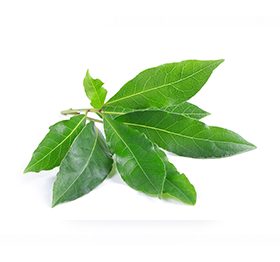Bay Leaf (तेज पत्ता)
tej patta

About Bay Leaf
Bay Leaf/ तेज पत्ता
Bay leaves are fragrant dried leaf from laurel tree, Bay leaves are available as fresh and Ground bay leaves too. These bay leaves are being used in many dishes like soups, sauces, rice and etc.
There are few species of bay leaf are poisonous ( Cherry laurel, mountain laurel ) and these varieties are not sold in market. Bay leaves are not generally eaten, and they being removed before serving. This is because bay leaves doesn’t get soften as we cook, and can cause of choking.
Bay leaves, with their enchanting aroma and subtle flavor, are a cherished ingredient in Indian cuisine, transforming ordinary dishes into extraordinary culinary experiences. These glossy, green leaves, often used whole in cooking, infuse a delicate essence into soups, curries, and rice dishes, creating a symphony of flavors that dance on the palate.
Beyond their culinary charm, bay leaves have been revered in traditional medicine for their myriad health benefits. They are known to aid digestion, soothe respiratory issues, and even support heart health. With their anti-inflammatory and antioxidant properties, bay leaves are not just a flavor enhancer; they are nature’s gift to wellness. As you stir your pot of biryani or simmer a spicy curry, remember the humble bay leaf, quietly imparting its magic. Its presence elevates your dishes, making every meal an occasion to savor. To include bay leaf in your daily menu, logon to planmeal.com. Embrace this aromatic herb and let it guide your culinary adventures, enhancing your meals with its unique taste and health benefits.
In the realm of spices, bay leaves stand tall - Elevate Your Dishes with Bay Leaf's Touch! Whether in a fragrant curry or a cozy soup, their allure is undeniable. Add bay leaves to your kitchen repertoire and experience the difference they make in your cooking journey.
Bay leaf is a crucial ingredient in cooking, known for its distinctive flavor and aromatic qualities. It is commonly used in soups, stews, and rice dishes, enhancing the overall taste profile of various cuisines, particularly Indian and Mediterranean. Beyond culinary uses, bay leaves hold significance in traditional medicine. They are recognized for their potential health benefits, including aiding digestion, reducing inflammation, and supporting respiratory health. Their natural properties make them a valuable addition to both meals and home remedies. Overall, bay leaves play an essential role in enriching flavors and promoting well-being.
How to Store Bay Leaf
To store Bay Leaves, first ensure they are completely dry. Place the leaves in an airtight container to protect them from moisture and air exposure. A glass jar or a sealed plastic bag works well. Store the container in a cool, dark place, such as a pantry or cupboard, away from direct sunlight and heat sources. This helps maintain their flavor and aroma for an extended period. For optimal freshness, use bay leaves within a year, though they can remain usable for up to three years if stored properly. Regularly check for any signs of moisture or mold.
Shelf Life of Bay Leaf
Bay leaves have a shelf life of about 1 to 3 years when stored properly in a cool, dark place in an airtight container. Their flavor and aroma may diminish over time, so use them fresh for best results.
How to Check Bay Leaf Before Buying
When buying bay leaves from a local vendor, check for freshness and quality. Look for vibrant green leaves with a smooth surface; avoid any that are yellow, brittle, or have spots, as these may indicate spoilage. Gently crush a leaf between your fingers to release its aroma; a strong, pleasant scent signifies freshness. If purchasing packaged bay leaves, ensure the packaging is intact and free from moisture, which can lead to mold.
Buying in bulk can be advisable if you use bay leaves frequently, as they can be more cost-effective. However, be cautious about the storage conditions. Keep bulk bay leaves in an airtight container in a cool, dark place to maintain their flavor and freshness. If you rarely use them, consider buying smaller quantities to prevent waste and ensure you're using the freshest product.
Explore
Explore our services and take your business to the next level.
Recent Posts

Lauki and Methi Thepla is the perfect addition to your balanced weekly menu. Pac...

Savor the warmth of Palak Dal Khichdi, a nourishing and comforting dish that bea...
Kuttu Soup is the perfect addition to your weekly meal plan, offering a deliciou...

Paneer Potato and Kuttu Cutlets are the perfect addition to your weekly meal pla...

Tomato and Lettuce Salad is the perfect addition to your weekly meal plan, offer...
Ready for a Healthier You?
Take control of your wellness! Get a customized meal plan that fits your lifestyle. It's time to eat smarter, feel better, and transform your life!
Get Your Plan Now!Already a member? Login and start now!
Nutrition Facts
Serving Size:
Servings Per Container: 1
| Amount Per Serving | ||
|---|---|---|
| Calories | 313 | |
| Fat | ||
| Saturated Fat | ||
| Trans Fat | ||
| Cholesterol | 0 | |
| Sodium | 3 | |
| Carbs | 74.1 | |
| Fiber | ||
| Sugar | 26 | |
| Protein | 8 | |
| VitaminD | ||
| Calcium | 67 | |
| Iron | 9.6 | |
| Potassium | 529 | |
* Percent Daily Values are based on a 2000 calorie diet.
* Percent Daily Values are based on a 2000 calorie diet.

